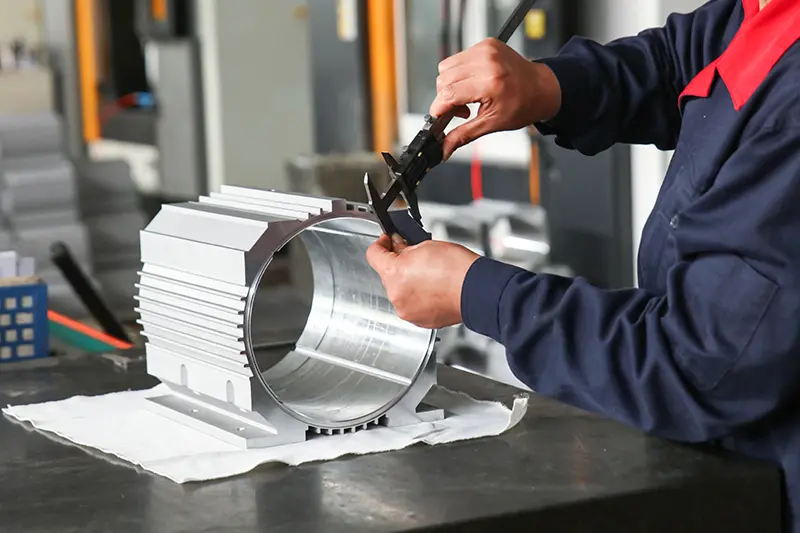Mobile:+86-311-808-126-83
Email:info@ydcastings.com
High-Quality Aluminum Pipe Caps for Seamless Connections and Durable Applications in Various Industries
Understanding Aluminum Pipe Caps A Comprehensive Overview
Aluminum pipe caps serve a crucial role in various industrial and construction applications. Made from lightweight, corrosion-resistant aluminum, these fittings are designed to close the ends of aluminum pipes, ensuring a secure and tight seal. This article will explore the different aspects of aluminum pipe caps, including their materials, benefits, applications, and installation techniques.
Materials and Types
Aluminum pipe caps are primarily manufactured from aluminum alloys, which offer an excellent balance of strength, weight, and resistance to environmental degradation. Common grades include 6061 and 6063, known for their superior mechanical properties and workability. Additionally, aluminum pipe caps come in various shapes and sizes to accommodate different pipe diameters and application requirements. The most common types include threaded caps, slip-on caps, and welded caps.
Benefits of Aluminum Pipe Caps
One of the most significant advantages of using aluminum pipe caps is their lightweight nature. Compared to other materials like steel or iron, aluminum is significantly lighter, which reduces transportation costs and makes handling easier during installation. Moreover, aluminum's inherent resistance to corrosion makes these caps ideal for outdoor environments, where exposure to moisture and chemicals is commonplace.
Another critical benefit is durability. Aluminum pipe caps resist bending and cracking, even under high-pressure conditions. This resilience ensures a long lifespan and minimizes the cost of replacement and maintenance over time. Additionally, aluminum's ability to be anodized or powder-coated allows for increased protection against corrosion and enhances the aesthetic appeal of the fittings.
Applications
aluminum pipe cap

Aluminum pipe caps are used in a wide array of applications across various industries. They are commonly found in construction projects, plumbing systems, and HVAC installations. In the construction sector, these caps are often used to close the ends of aluminum structural pipes, ensuring a neat and finished look. In plumbing, they help seal off unused lines, preventing leaks and maintaining pressure in the system.
HVAC systems also utilize aluminum pipe caps to seal ductwork and piping. This helps improve air quality and system efficiency by preventing air leaks. Other applications can be found in the automotive and manufacturing industries, where aluminum pipes are frequently employed.
Installation Techniques
Installing aluminum pipe caps is generally a straightforward process. Depending on the type of cap and the application, various installation methods may be employed. Threaded caps can simply be screwed onto the end of a pipe, creating a tight seal that is easy to remove if necessary. Slip-on caps require the pipe end to be slightly flared for a snug fit, while welded caps necessitate welding the cap directly onto the pipe for a more permanent solution.
Prior to installation, it is crucial to ensure all surfaces are clean and free of contaminants to prevent leaks and improve adhesion. Proper alignment is also essential to ensure that the caps fit securely and function as intended.
Conclusion
Aluminum pipe caps are essential components in many industrial and residential applications. Their lightweight nature, corrosion resistance, and durability make them a popular choice across several industries. Whether utilized in plumbing, construction, or HVAC systems, these fittings provide a reliable solution for closing and protecting the ends of aluminum pipes. As the demand for lightweight and high-performance materials continues to rise, aluminum pipe caps are likely to remain a staple in construction and industrial applications for years to come.
-
Why Should You Invest in Superior Pump Castings for Your Equipment?NewsJun.09,2025
-
Unlock Performance Potential with Stainless Impellers and Aluminum End CapsNewsJun.09,2025
-
Revolutionize Your Machinery with Superior Cast Iron and Aluminum ComponentsNewsJun.09,2025
-
Revolutionize Fluid Dynamics with Premium Pump ComponentsNewsJun.09,2025
-
Optimizing Industrial Systems with Essential Valve ComponentsNewsJun.09,2025
-
Elevate Grid Efficiency with High-Precision Power CastingsNewsJun.09,2025











